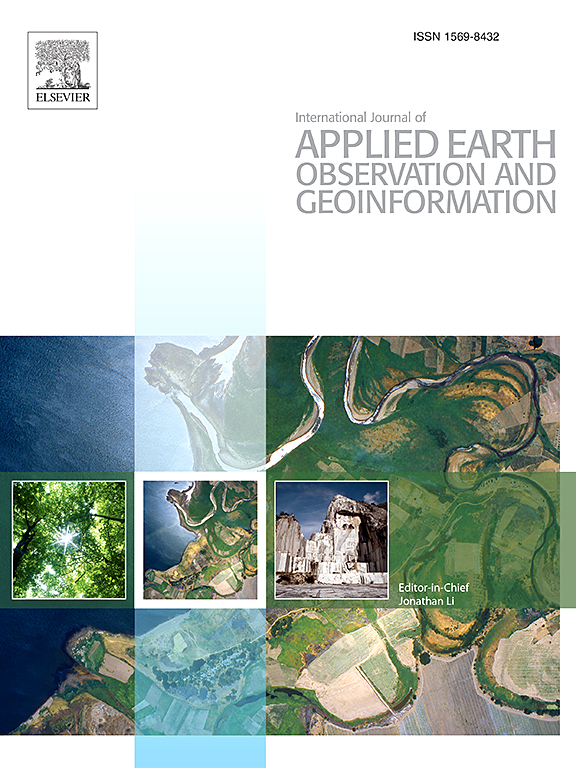Advancing urban connectivity measurements for SDG 11.a with SDGSAT-1 nighttime light data in urban agglomerations
IF 7.6
Q1 REMOTE SENSING
International journal of applied earth observation and geoinformation : ITC journal
Pub Date : 2025-05-22
DOI:10.1016/j.jag.2025.104611
引用次数: 0
Abstract
Urban agglomerations, formed by multiple cities connected through transportation and information networks, play a pivotal role in the sustainable development of human settlements and communities. This study introduces a data-driven approach to analyze urban connectivity using high-precision 10-meter panchromatic nighttime light (NTL) data from SDGSAT-1, integrated with OpenStreetMap (OSM) road data, to support SDG 11.a for sustainable cities and communities. We develop image enhancement and network extraction methods to accurately detect urban road networks and assess connectivity. By incorporating geographical adjustment factors and integrating urban geographic information, we construct a series of indicators to evaluate the resource flow capacities of urban agglomerations using social network models. The study focuses on three major urban agglomerations: the Chengdu-Chongqing Urban Agglomeration (CCUA), the Shandong Peninsula Urban Agglomeration (SPUA), and Liaoning Province (Liaoning). Through these case studies, we extract urban connectivity networks and analyze their resource flow capabilities. This approach provides valuable insights into the intensity and efficiency of urban resource circulation, offering data-driven support for fostering sustainable urban development in alignment with SDG 11.a.
推进城市连通性测量以实现可持续发展目标11。a使用SDGSAT-1在城市群的夜间灯光数据
由多个城市通过交通和信息网络连接而形成的城市群在人类住区和社区的可持续发展中发挥着关键作用。本研究引入了一种数据驱动的方法,利用SDGSAT-1的高精度10米全色夜间灯光(NTL)数据,结合OpenStreetMap (OSM)道路数据,分析城市连通性,以支持可持续发展目标11。A代表可持续城市和社区。我们开发了图像增强和网络提取方法,以准确地检测城市道路网络并评估连通性。通过引入地理调整因子,整合城市地理信息,构建了一系列评价城市群资源流动能力的社会网络模型指标。研究的重点是三个主要城市群:成渝城市群(CCUA)、山东半岛城市群(SPUA)和辽宁省(辽宁)。通过这些案例研究,我们提取了城市连接网络,并分析了其资源流动能力。这种方法为了解城市资源流通的强度和效率提供了宝贵的见解,为促进符合可持续发展目标11.a的可持续城市发展提供了数据驱动的支持。
本文章由计算机程序翻译,如有差异,请以英文原文为准。
求助全文
约1分钟内获得全文
求助全文
来源期刊

International journal of applied earth observation and geoinformation : ITC journal
Global and Planetary Change, Management, Monitoring, Policy and Law, Earth-Surface Processes, Computers in Earth Sciences
CiteScore
12.00
自引率
0.00%
发文量
0
审稿时长
77 days
期刊介绍:
The International Journal of Applied Earth Observation and Geoinformation publishes original papers that utilize earth observation data for natural resource and environmental inventory and management. These data primarily originate from remote sensing platforms, including satellites and aircraft, supplemented by surface and subsurface measurements. Addressing natural resources such as forests, agricultural land, soils, and water, as well as environmental concerns like biodiversity, land degradation, and hazards, the journal explores conceptual and data-driven approaches. It covers geoinformation themes like capturing, databasing, visualization, interpretation, data quality, and spatial uncertainty.
 求助内容:
求助内容: 应助结果提醒方式:
应助结果提醒方式:


